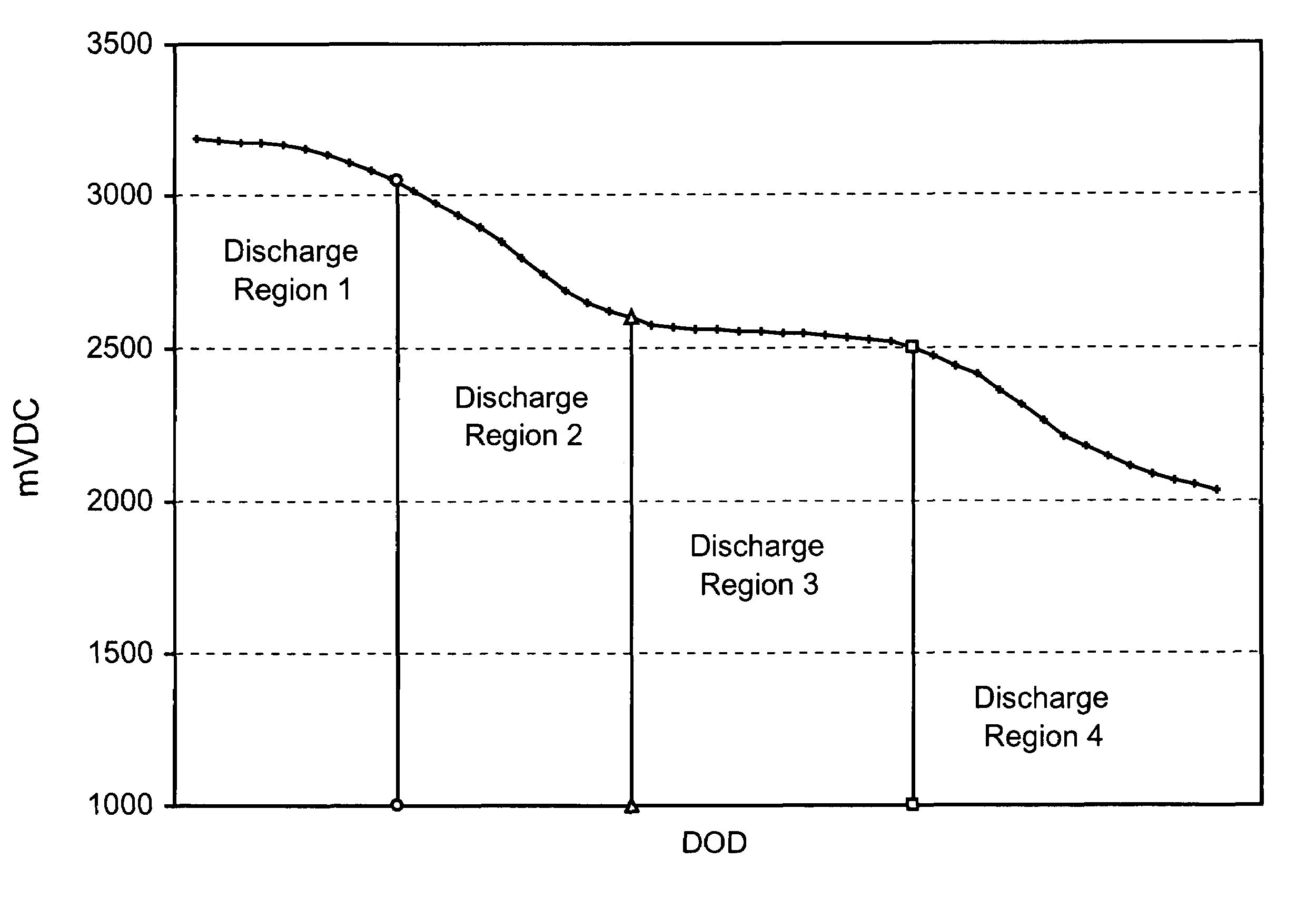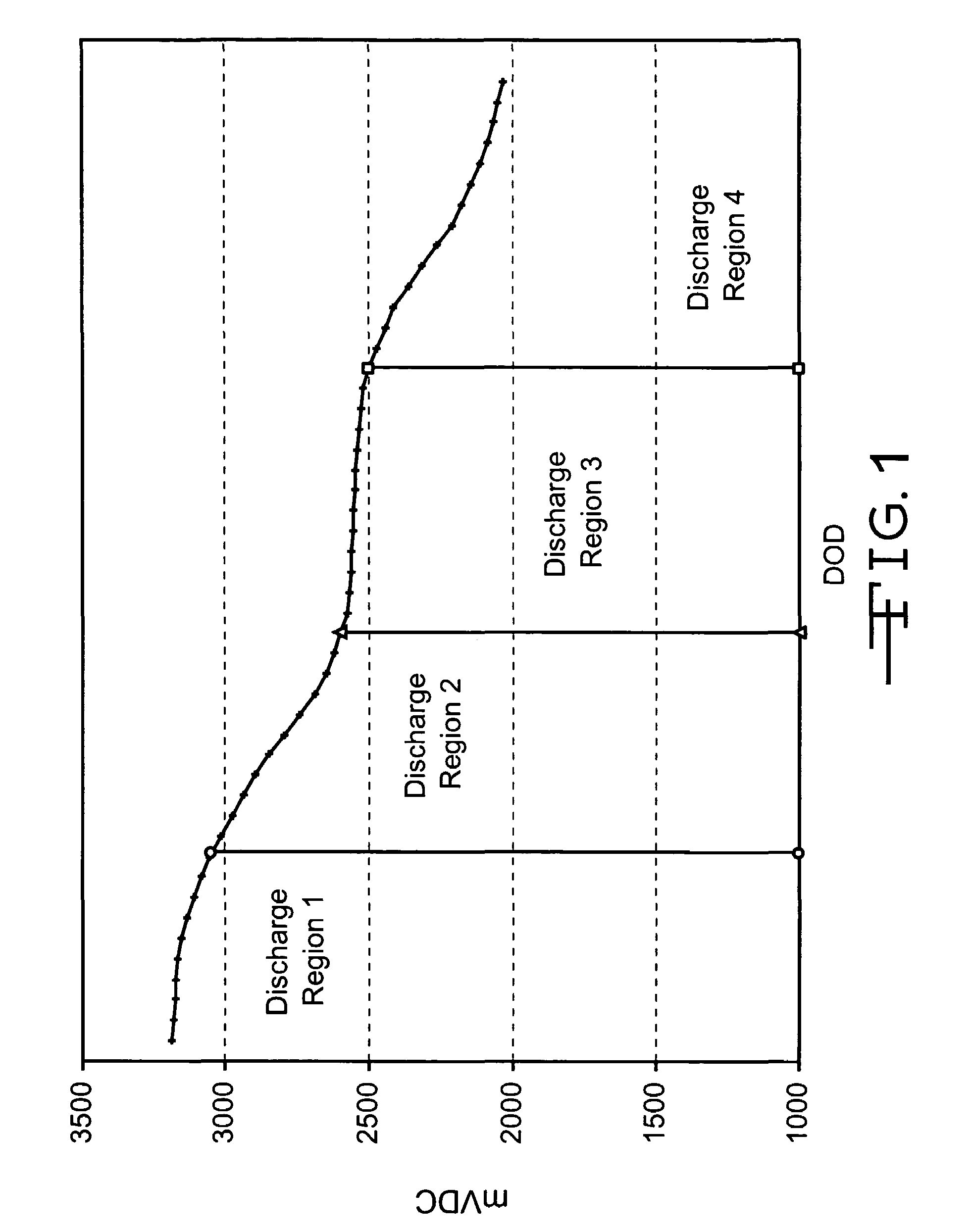Methods to improve efficiency of lithium/silver vanadium oxide cell discharge energy in implantable medical device applications
a technology of silver vanadium oxide and discharge energy, which is applied in the field of conversion of chemical energy to electrical energy, can solve the problems of reducing discharge voltage, limiting effectiveness and even proper functioning, and affecting the discharge efficiency of lithium/silver vanadium oxide cells, so as to preserve cell capacity and preserve charging efficiency
- Summary
- Abstract
- Description
- Claims
- Application Information
AI Technical Summary
Benefits of technology
Problems solved by technology
Method used
Image
Examples
Embodiment Construction
[0013]The term percent of depth-of-discharge (DOD) is defined as the ratio of delivered capacity to theoretical capacity times 100.
[0014]The term “pulse” means a short burst of electrical current of significantly greater amplitude than that of a pre-pulse current or open circuit voltage immediately prior to the pulse. A pulse train consists of at least one pulse of electrical current. The pulse is designed to deliver energy, power or current. If the pulse train consists of more than one pulse, they are delivered in relatively short succession with or without open circuit rest between the pulses. An exemplary pulse train may consist of one to four 5 to 20-second pulses (23.2 mA / cm2) with about a 10 to 30 second rest, preferably about 15 second rest, between each pulse. A typically used range of current densities for cells powering implantable medical devices is from about 15 mA / cm2 to about 50 mA / cm2, and more preferably from about 18 mA / cm2 to about 35 mA / cm2. Typically, a 10 second...
PUM
| Property | Measurement | Unit |
|---|---|---|
| time | aaaaa | aaaaa |
| current densities | aaaaa | aaaaa |
| current densities | aaaaa | aaaaa |
Abstract
Description
Claims
Application Information
 Login to View More
Login to View More - R&D
- Intellectual Property
- Life Sciences
- Materials
- Tech Scout
- Unparalleled Data Quality
- Higher Quality Content
- 60% Fewer Hallucinations
Browse by: Latest US Patents, China's latest patents, Technical Efficacy Thesaurus, Application Domain, Technology Topic, Popular Technical Reports.
© 2025 PatSnap. All rights reserved.Legal|Privacy policy|Modern Slavery Act Transparency Statement|Sitemap|About US| Contact US: help@patsnap.com


